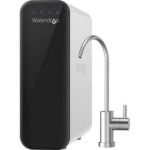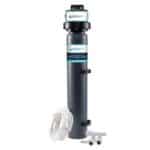Shopping for a water filter can feel like a trip through the twilight zone. Trying to make sense of the technical jargon and sorting through manufacturers’ claims is frustrating, and if you’re like some folks, you’re ready to throw in the towel.
But improving the quality of your drinking water is one of the most impactful things you can do for your health, so we’re going to ease the confusion for you with our comprehensive buying guide plus a review of seven top choices in filtration systems that are designed to mount under a kitchen or bathroom sink.
Expert Picks:
- Best for well water: Frizzlife
- Best for existing faucets: CuZn UC-200
- Best for Apartments: Woder 10K-Gen3
- Best for Fluoride: Filtrete
- Best for Chlorine: APEC WFS-1000
- Best for Lead: Aquasana AQ-5300
#1. CuZn UC-200
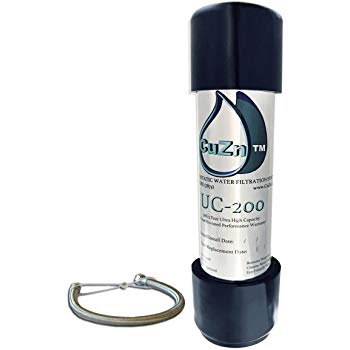
CuZn’s UC-200 is the ultimate install-it-and-forget-it under sink water filtration system.
It’s a no-nonsense unit with a minimalist design — set it up under the sink in minutes and enjoy clean water for five years or 50,000 gallons with no costly cartridge changes.
Features
- High-capacity
- Works with any kitchen faucet
- Installs in minutes
- Comes with a 90-day satisfaction guarantee and 5-year warranty
- Exceptional customer service
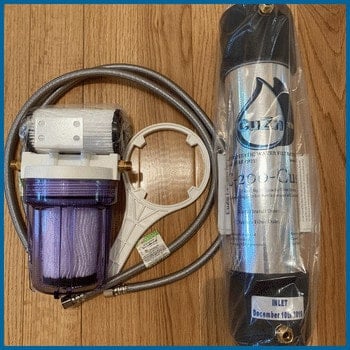
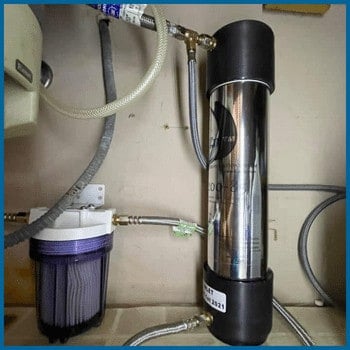

Perfect For: Anyone looking for a maintenance-free budget friendly water filtration system.
Pros
- Activated charcoal filter media removes sediment, chlorine, pesticides, herbicides and more.
- A unique bacteriostatic layer reduces heavy metals and inhibits the growth of bacteria in the filter — all without a significant drop in water pressure.
- With no cartridges to replace, the UC-200 is maintenance-free and has one of the lowest total costs of ownership on the market.
- CuZn isn’t a household name, but it should be — this is an excellent water filter. The UC-200 removes increasingly common city water contaminants, like lead and pesticides, as well as chlorine.
- Its total capacity is enormous — 50,000 gallons — and it’s one of the few filters you can install and not think about for five full years.
- But if you’re worried about lead, it removes slightly less than other models — 98-percent versus 99.9-percent.
- The difference is small, but because lead is highly toxic, especially to children, it’s large enough to matter.
- If your water isn’t at risk for lead contamination and you want a long-lasting, hassle-free filter that makes water taste great for the lowest possible price, this is one of our top picks.
- we like that CuZn requires no drilling to install.
Cons
- Designed only for use with biologically safe city water
Cuzn Product Updates:
- 36″ Stainless steel hoses included
#2. APEC WFS-1000 3 Stage System
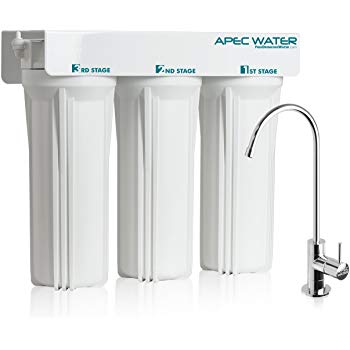
Apec has been making filters for more than 20 years. This triple-stage system is made in the U.S.A.
it’s designed to remove sediment and chemical tastes from bacteriologically-safe city water.
Features
- Affordable annual filter changes
- Easy to install
- Doesn’t remove healthy minerals
- Superior chlorine filtration
- Certified by the Water Quality Association

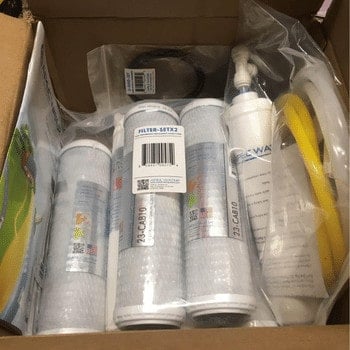

Great for: Those looking to improve heavily chlorinated city water.
Pros
- Three separate filters in heavy-duty housings remove particles like dirt and rust that make water cloudy and eliminate the heavy chlorine residue found in heavily-treated municipal water.
- Super-capacity cartridges last more than a year between changes, reducing maintenance costs, and the system comes with a compatible, 100-percent lead-free faucet.
- If your water tastes like it came from a swimming pool, APEC’s WFS-1000 has a triple-filtration system with two separate carbon block filters for maximum chlorine extraction.
- The initial cost is reasonable, it’s well-made, easy to install and filters need changing only annually.
- It requires a dedicated faucet — not my favorite feature — but it’s included, and like the CuZn, it doesn’t remove the healthy minerals I want in my water.
- If a heavy chlorine taste is your primary problem, the water from this filter tastes fantastic, but if you have kids and are worried about lead, other models may be a better investment.
- This system will not reduce water pressure.
- Installation is simple requires no drilling
Cons
- Does not remove lead or other heavy metals
Apec Product Updates:
- Apec now provides a 2-year extended warranty when you register your purchase.
#3. Aquasana AQ-5300 3-Stage
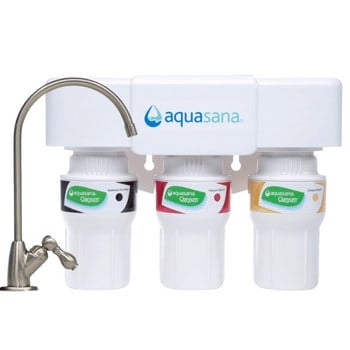
This Aquasana 3-Stage kitchen sink water filter is NSF-certified to remove more than 77 common contaminants including chlorine, chloramine, pharmaceuticals, lead, heavy metals and chemicals like pesticides and herbicides.
Features
- Removes chloramine without compromising filter efficiency
- The faucet is attractive and available in three colors
- Features a filter change alarm
- Cartridges are easy to replace
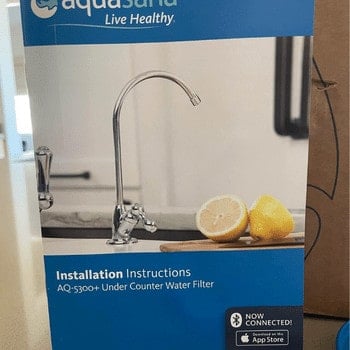
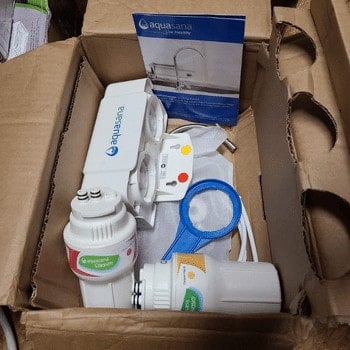

Perfect For: Those looking for a NSF certified filter that can handle most common city water contaminants should choose Aquasana.
Pros
- It doesn’t remove most microorganisms, but its catalytic carbon filter captures chlorine-resistant cysts like cryptosporidium and giardia — a noteworthy plus.
- Filtering capacity is 600 gallons between cartridge changes — roughly every six months — and as a bonus, a battery operated filter change alarm tells you when time to replace cartridges.
- Installation is easy, and the kit comes with a compatible faucet.
- It removes a broad range of contaminants including chloramine, a secondary disinfectant that select cities used in addition to chlorine.
- It has a high flow rate, a filter change alarm and an excellent sediment filter that reduces clogs and improves its overall efficiency.
- faucet that’s available in three colors.
- The filter change indicator battery will last up to 1600 hours.
- This system doesn’t remove any beneficial minerals like calcium, potassium and magnesium.
Cons
- Weak exterior housing.
- Limited customer service.
- Doesn’t remove fluoride.
Aquasana EQ 5300 Product Updates:
- Now comes in three faucet finishes.
#4. Woder 10K-Gen3 Ultra High Capacity
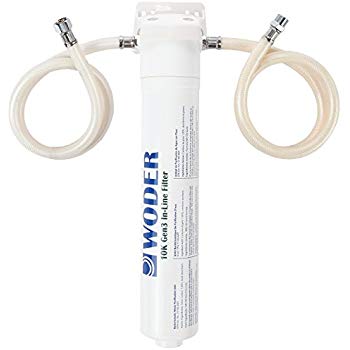
The Woder Gen3 is designed to work with cold, biologically safe municipal water.
It removes lead, asbestos, chromium, mercury, sediment and volatile organic compounds and reduces the unpleasant taste and odor of chlorine while leaving in healthy minerals.
Features
- Effortless installation
- High capacity
- Low total cost of ownership
- Selective filtration technology retains healthy minerals
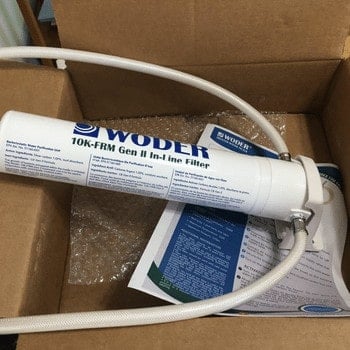
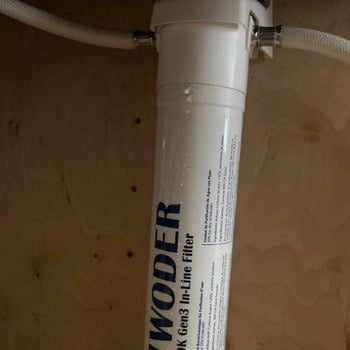

Ideal For: Anyone looking for a long-lasting filter that can be setup in minutes.
Pros
- The kit contains everything necessary for installation. It sets up in minutes without special tools or drilling, and works with any faucet.
- The total filtration capacity is 10,000 gallons between cartridge changes and replacements are affordably priced.
- Woder makes a fine filter. Like the CuZn, it’s cartridge has an extended life span — 10,000 gallons or up to three years — and it capably removes most worrisome contaminants without affecting water’s mineral content.
- The flow rate is high at 2 gallons per minutes — almost double that of the Doulton — and it works with any kitchen faucet, even pull-outs.
- Installation is a breeze, cartridge replacements are inexpensive, and while it doesn’t last as long as the super high-capacity CuZn, it does remove more lead.
- Gallon for gallon, CuZn’s UC-200 is a little less expensive to operate, but both are about the same size, essentially hassle-free and perform like champs.
- If lead is your worry, the Woder is good choice. If cost and low-maintenance matter more, I’d opt for the UC-200.
- This filter will not reduce your water pressure.
- This can also be used with pull-out faucets.
Cons
- Lacks a filter change indicator
Woder Product Updates:
- Now offers two hose types: Steel or PVC
#5. Filtrete Advanced Filtration System
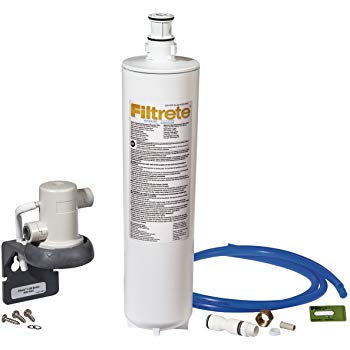
Filtrete filters are manufactured by 3M — a longtime leader in filtration technology.
The system is little more than a basic cartridge, so it’s low-profile enough for installation under kitchen and bathroom sinks with less-than-average space.
Features
- Low-initial cost
- Fits in small bathroom cabinets
- Easy installation
- Can be used with any faucet
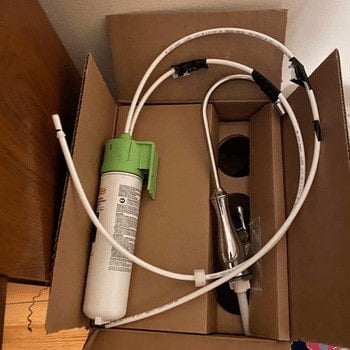
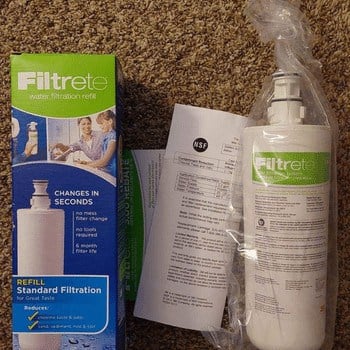
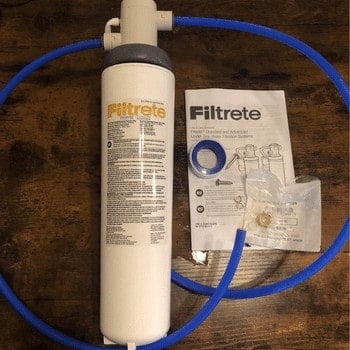
Ideal For: For anyone looking for a low-cost water filter that’s NSF certified and made by 3M.
Pros
- It works with your existing faucet, and set-up takes less than 30 minutes.
- It has a 2000-gallon total capacity — an average family can expect about six months between filter changes.
- This system is recommended only for water that’s been treated for microorganisms.
- It removes sediment, rust, chlorine, lead and microbial cysts, but leaves in healthy minerals.
- If you’re on a budget, this Filtrete filter has the lowest initial cost to buy and is a pleasure to recommend with a few cautions.
- Among similar models, it has one of the highest micron ratings.
- That means it filters out more contaminants overall, but because of that, it also tends to accumulate more sediment and may reduce water pressure a little more than expected.
- It has a fairly low 1500-gallon capacity, and cartridges need to be replaced every six months but are reasonably priced.
- Cost shouldn’t be a barrier to clean drinking water — this model fixes that.
- It’s almost as cheap as a pitcher and costs less in the long run.
- Sign up for text reminders and Filtrete will let you know when it’s time to change to the cartridge!
- This system can be mounted vertically or horizontally without the need of a drill.
- This can be used as a secondary backup if you’re on a private well.
Cons
- Expect a decrease in water pressure
Filtrete Product Updates:
- No news, yet.
#6. Frizzlife Filter System
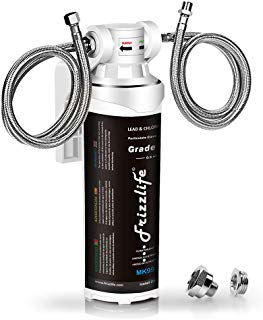
You can kiss bottled water goodbye with this inexpensive system from Frizzlife.
Each cartridge removes sediment, heavy metals, chlorine, VOC’s and other chemical contaminants from 1600 gallons of water.
Features
- Doesn’t remove beneficial minerals
- Lower-than-average long-term cost of ownership
- Installation kit contains everything including plumber’s tape
- Comes with a two-year warranty
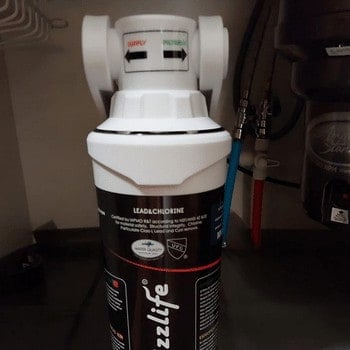

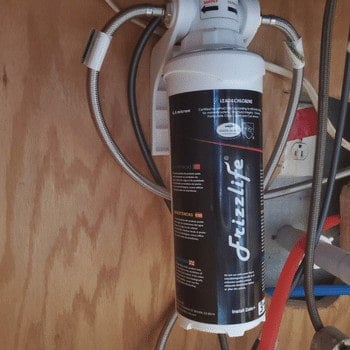
Great For: Those looking for a great way to remove harmful contaminants such as lead for a low cost.
Pros
- Kits come complete with a brushed nickel faucet and adapters for both 1/4-inch and 3/8-inch water lines.
- The cap has a unique auto shut-off feature that means your home’s water supply doesn’t need to be turned off for installation or cartridge changes.
- Replacement filters are among the least expensive in the industry despite their high quality.
- Frizzlife backs this unit with a 100-percent satisfaction guarantee.
- The filters can last one to three years, but in most practical circumstances, they should be replaced every six to eight months.
- FrIzzlife undersink filters are easy to replace and the process requires no tools, and with the auto shut-off feature, it can be done without turning off the water supply.
- With performance that’s similar to the Filtrete, the Frizzlife system is a single cartridge with a moderate capacity that comes in an all-inclusive kit that has both 3/8-inch 1/4-inch connectors and plumber’s tape!
- The cap that connects the filter to the cold water line features an automatic shut-off so cartridges can be changed without turning off the water supply — that’s convenient and less messy.
- Replacement cartridges are inexpensive and a breeze to replace.
- The system does, however, require the use of the faucet that comes with the kit, and although it’s very modern and attractive compared to similar models, it adds to the cost of the system and may not offer the look you want.
- If need a budget-friendly filter, but like your existing fixture, consider the Filtrete first.
Cons
- Won’t work with every faucet
Frizzlife Product Updates:
- No news, yet
Compare All 6 Brands
(Mobile users: Swipe to scroll)
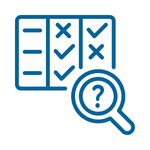 Compare Brands & Models Compare Brands & Models |
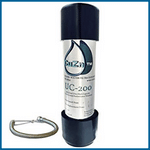 #1 CuZn UC-200 Filter #1 CuZn UC-200 Filter |
 #2 Apec WFS-1000 Filter #2 Apec WFS-1000 Filter |
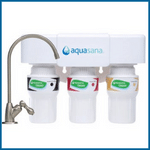 #3 Aquasana AQ-5300 #3 Aquasana AQ-5300 |
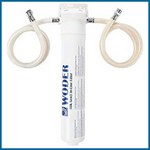 #4 Wonder 10k-Gen3 #4 Wonder 10k-Gen3 |
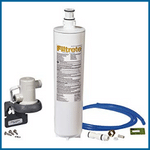 #5 Filtrete Advanced System #5 Filtrete Advanced System |
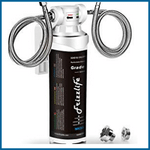 #6 Frizzlife UnderSink Filter #6 Frizzlife UnderSink Filter |
|---|---|---|---|---|---|---|
| Rating | 5/5 | 5/5 | 5/5 | 4.5/5 | 4.5/5 | 4.5/5 |
| Price | $ | $$ | $$ | $$ | $ | $ |
| Contaminants Removed | 10+ | 10+ | 77+ | 10+ | 10+ | 10+ |
| Filtration Capacity | 50,000 gal. | 2,500 gal. | 600 gal. | 8,480 gal. | 2000 gal. | 1,600 gal. |
| Certifications | NSF Certified components | NSF certified components | NSF Certified 42, 53 & 401 | NSF Certified 42, 372 | NSF Certified 42, 53 | NSF Certified 42, 53 |
| Annual Cost | $0 | $28 | ~$125 | $0 | ~$40 | ~$40 |
| Warranty | 5-year | 2-year | 1 year limited | 1 year | n/a | 2 year |
How We Chose
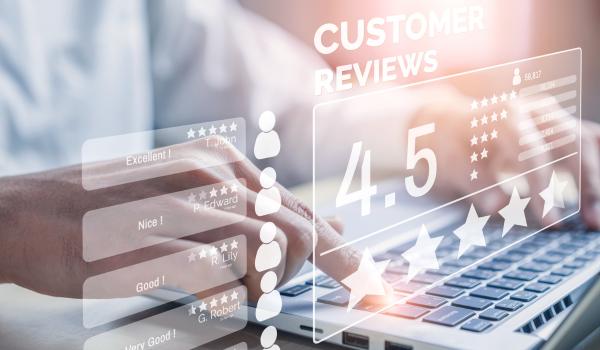
Finding the right system for you? Let me tell you, it’s more than just scrolling through specs. Here’s the real deal on how we nailed it down:
- Filter Power: We’ve seen filters that promise the moon but deliver… well, not much. So, we got hands-on, testing how each one tackles the bad guys like chlorine and pfas. Only the champs that left water tasting like a mountain spring made our cut.
- Flow & Capacity: Ever waited for a coffee pot to fill with slow-dripping water? Nope, we don’t like that either. Our picks keep the water flowing just right – quick enough to fill your bottle but thorough enough to catch the nasties.
- Easy Setup & Care: I’ve wrestled with filters that needed an engineering degree to install. Not fun. We chose ones that are more like, ‘fix it and forget it’. Easy to install, and even easier to maintain.
- Size Matters: My under-sink area’s already packed with cleaning stuff, and I bet yours is too. We looked for compact warriors that slip in easily and still pack a punch.
- Certified Quality: Those NSF stickers? They’re not just for show. We picked filters that have been through the wringer and passed with flying colors.
- User Reviews: I’ve been down the rabbit hole of reviews, where every filter sounds perfect. So, we read between the lines, picking out the ones that real people, not just reviewers, are raving about.
- Costs: Money matters. We weighed the tags – both for buying and for keeping the thing running. Best bang for your buck? That’s what we were after.
- Thinking Green: I’m all for saving the planet one plastic bottle at a time. Filters that cut down on waste and keep working year after year? Yes, please.
After digging, testing, and some serious coffee-fueled debates, we’ve found the filters that really stand out. They’re not just machines; they’re your daily heroes, quietly ensuring every sip you take is clean, safe, and refreshing. Ready to dive into a world of crystal-clear water? These filters won’t let you down.
Buyer’s Guide
Undersink filters are less complex than costly whole-home systems, and unless you want to soften your water or need biological filtration, they offer a significant improvement in water quality and peace of mind without breaking the bank.
Compared to using filtration pitchers or bottled water, an under counter water filter will save you lots of money. Let’s dive in!
Understanding Water Contaminants
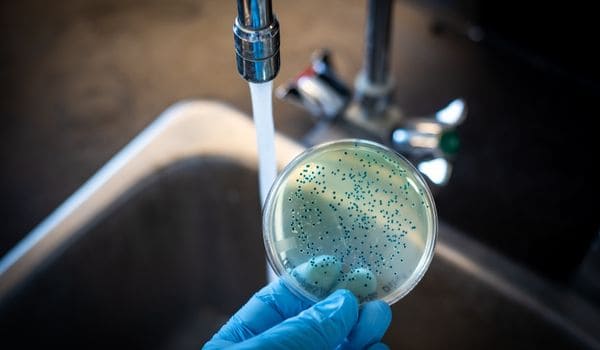
When you turn on your tap, you expect clean water, right? But often, what flows out carries more than just H2O. I’ve seen it firsthand – water that looks clear but carries hidden contaminants like chlorine, lead, and even microscopic nasties. Take chlorine, for example. It’s great for disinfecting, but it can leave your water tasting and smelling like a public pool. Not exactly what you want in your morning tea.
The Invisible Risks
And then there’s the stuff you can’t see. Lead, for instance, can leach from old pipes, and trust me, it’s the last thing you want in your drinking water. It’s sneaky and harmful, especially to kids. I’ve tested water in homes where lead levels were way above what’s considered safe, and it’s a game-changer for those families. Mercury, pesticides, herbicides – these aren’t just terms on a label. They’re real contaminants that I’ve seen affecting water quality, especially in certain areas or older homes.
Filtering Facts from Fiction
Here’s where a good water filter makes all the difference. I’ve installed and tested dozens, and I can tell you, not all filters are created equal. Some are like a fine net, catching only the big stuff, like sediment and chlorine. Others are more like a high-tech barrier, blocking even the tiniest pollutants, like lead or pharmaceutical residues.
The trick is knowing what’s in your water. I always recommend getting your water tested – it’s like getting a map before you start a journey. Once you know what you’re dealing with, picking the right filter is much easier. And believe me, there’s nothing quite like the peace of mind that comes from knowing your water is clean and safe, sip after sip.
Filter Certifications and What They Mean

When it comes to water filtration, those certification labels aren’t just fancy stickers. They’re your assurance that what you’re buying isn’t just a glorified sieve. I’ve seen plenty of filters, but the ones that stand out always have certifications like ANSI/NSF.
ANSI/NSF – The Quality Markers:
Think of ANSI/NSF certifications as a filter’s resume. NSF/ANSI 42? It’s all about improving taste and reducing odor (hello, chlorine-free water!). NSF/ANSI 53, now that’s a big deal – it targets health-related contaminants like lead, mercury, and cryptosporidium. I always tell my clients, if you’re worried about what’s in your water, make sure your filter has this certification.
Beyond the Basics:
There are other certifications too, like NSF/ANSI 58 for reverse osmosis systems and NSF/ANSI 401 for emerging contaminants like pharmaceuticals. I’ve recommended NSF/ANSI 58 certified RO systems in areas with heavy contamination – they’re like a fortress guarding your water. And with more stuff ending up in our water these days, NSF/ANSI 401 is becoming a badge to look for.
The Bottom Line:
Certifications are a shortcut to understanding what a filter can really do. They’re not just about compliance; they’re about peace of mind. I always advise going for a filter with the right certifications for your specific water woes – it’s like choosing a doctor based on their expertise.
Capacity and Flow Rate
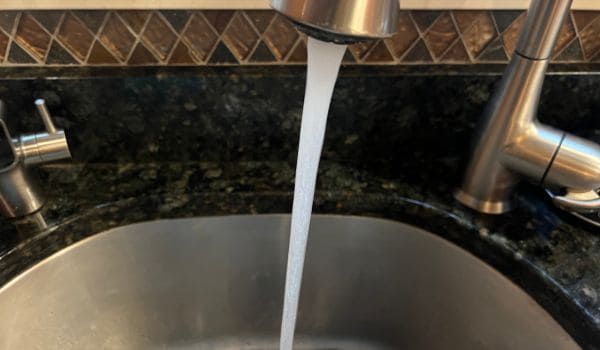
- Understanding the Basics:
- Capacity: Measures how much water your filter can purify before needing a replacement.
- Flow Rate: Indicates how quickly water flows through your filter.
- Why It Matters:
- Capacity:
- Essential for determining how often you’ll need to change the filter.
- Smaller families or single-person homes might opt for lower capacity.
- Larger households should consider higher capacity to avoid frequent changes.
- Flow Rate:
- Affects how fast you get your filtered water.
- Low flow rate can mean slow water delivery – think waiting for that morning coffee.
- Too high, and it might compromise the filtration effectiveness.
- Capacity:
- Finding the Right Fit:
- Daily Water Usage: Consider how much water your household consumes daily.
- Household Size: More people usually means more water usage.
- Patience for Filling Times: If slow filling is a no-go, aim for a higher flow rate.
- The Perfect Balance:
- Aim for a filter that matches your household’s water usage and expectations for speed.
- The right capacity and flow rate mean efficient filtering without frequent maintenance or waiting ages for a glass of water.
Installation and Maintenance
Installing an under-sink water filter might seem daunting, but it’s usually a straightforward task. According to ThisOldHouse ( my favorite show growing up), most homeowners can install these systems with basic tools and a bit of patience.
- Getting It Set Up:
- DIY-Friendly: Many under-sink filters are designed for easy installation. Think plug-and-play but for water.
- Tools & Time: Typically, you’ll need basic tools and about an hour. Always read the manual first – it’s like a treasure map to a smoother setup.
- Maintenance Must-Knows:
- Filter Changes: Mark your calendar! Regular filter changes are crucial for keeping water quality up.
- Keep an Eye Out: Watch for changes in taste, odor, or flow rate – they’re like little alerts that it’s time for maintenance.
- Pro Tips:
- Space Check: Before buying, ensure you have enough space under your sink. No one likes a surprise game of Tetris during installation.
- Follow the Flow: Make sure your system’s water flow matches your household’s rhythm. Slow flow when you’re rushing out the door? Not ideal.
Health and Environmental Benefits

The health and environmental benefits of using water filtration systems are well-documented. For instance, a study by the Water Quality Association highlights the effectiveness of these systems in reducing harmful contaminants.
- Sip Safe, Stay Healthy:
- Contaminant Reduction: Filters can significantly reduce harmful contaminants. Less lead, fewer worries.
- Healthy Hydration: Clean water means better hydration, and who doesn’t want that?
- Eco-Friendly Choice:
- Bottle-less Living: Ditch the plastic bottles. Under-sink filters are a win for the planet.
- Sustainable Savings: Over time, filters can be more cost-effective and eco-friendly than bottled water.
- Real-Life Impact:
- Taste the Difference: Ever noticed how filtered water just tastes better? It’s like upgrading from economy to first class, but for your water.
- Peace of Mind: Knowing your water is clean can be a huge relief. It’s one less thing to worry about in your busy life.
Cost Analysis
The average cost of an under-sink filter unit is $125, not including replacement filter costs, etc. When looking at long-term costs, you need to calculate what the true annual costs are.
For example, some filters need changing every 3-6 months, while others might require a filter change once every 6-9 months. Depending on the costs of the filter, that can add up fast!
Balancing Initial Investment and Long-Term Value
- Upfront Costs: While the initial cost might seem high, consider the superior filtration and longevity you’re getting compared to simpler filters.
- Maintenance Expenses: Factor in the cost of replacement filters. Regular maintenance is key to ensuring consistent water quality.
- Comparing to Bottled Water: Regularly purchasing bottled water? Add up that expense over a year, and you’ll see how an under-sink filter can be a cost-effective alternative, with the bonus of reducing plastic waste.
The Bigger Picture
- Health Savings: Better water quality can lead to improved health and potentially lower medical costs over time.
- Environmental Impact: Minimizing the use of bottled water not only saves money but also helps reduce your environmental footprint.
Aesthetic and Practical Considerations
The choice of an water filter isn’t just about water quality; it’s also a matter of enhancing your kitchen’s functionality and style.
Design and Functionality
- Space-Saving: These filters are out of sight, keeping your kitchen space uncluttered and your counters free.
- Faucet Styles: Accompanying faucets come in various designs, allowing you to complement your kitchen’s aesthetic while enjoying clean, filtered water.
Ease of Use
- Daily Convenience: Once installed, under-sink filters provide hassle-free access to purified water, eliminating the need for bulky pitchers or frequent bottle purchases.
- Accessibility: Designed for ease, these systems make getting clean water simple for everyone, ensuring a seamless flow of hydration for the whole family.
User Reviews and Experiences
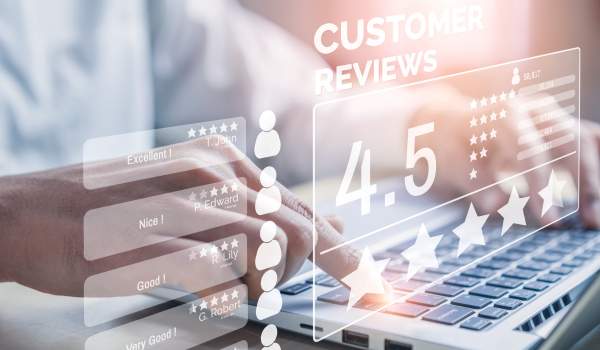
Real-world feedback from users can provide invaluable insights into the performance and practicality of under-sink water filtration.
Gathering Genuine Feedback
- Performance in Action: User reviews often highlight how a filter performs day-to-day, from water taste improvements to maintenance ease.
- Long-Term Reliability: Look for comments on durability. How well does the filter hold up over months or years of use?
- Installation Experiences: First-hand accounts of installation can reveal how easy (or challenging) setting up the filter might be for DIYers.
Learning from Others
- Common Themes: Notice recurring praises or complaints? These can be crucial indicators of a filter’s overall quality and user satisfaction.
- Personal Stories: Sometimes, a user’s story can resonate with your own water concerns, helping you make a more informed decision.
Pros and Cons

Diving into the world of water filtration, means weighing their benefits against potential drawbacks. These systems can be game changers, especially for those on a budget, or are living in a rental space where you can’t make serious alterations. So let’s weigh the pros and cons before going all in.
Pros:
- Top-Notch Water Purity: They excel at removing a wide range of contaminants, significantly improving the safety, taste, and odor of your water.
- Stealthy Space Savers: Tucked away under the sink, these units save precious counter space, maintaining your kitchen’s aesthetics.
- Long-Term Filter Lifespan: Designed for endurance, these filters require less frequent changes than pitcher or faucet-mounted types, making them convenient for busy lifestyles.
- “Set It and Forget It” Convenience: Once installed, they provide a constant supply of purified water directly from your tap, eliminating the need for manual refilling.
- Customizable Filtration: With a variety of models available, you can choose a system tailored to address specific contaminants in your water supply.
Cons:
- Installation Adventures: Installation can range from straightforward to complex, potentially requiring professional help if you’re not DIY-inclined.
- Upfront Investment: These systems generally come with a higher initial cost compared to simpler filtration solutions.
- Maintenance Matters: Periodic filter replacements are necessary and can be a bit daunting for those not used to DIY tasks.
- One-Spot Wonder: They filter water at a single point of use, typically the kitchen sink, leaving other faucets in your home unfiltered.
- Flow Rate Frustrations: Some models may reduce the flow rate of your tap water, which can be noticeable when filling large containers or during busy kitchen activities.
FAQ’s

- Do under-sink filters really improve water taste?
- Absolutely! They’re champs at reducing chlorine and other chemicals that make tap water taste like a swimming pool.
- How often do I need to change the filter?
- Depends on the model, but usually every 6 to 12 months. If your water starts tasting odd or the flow slows down, it’s time for a change.
- Can these filters remove lead?
- Yes, many can. But check the specs – you want something that specifically says it tackles heavy metals like lead.
- Will an under-sink filter work with my pull-out faucet?
- Tricky, but doable. Some filters come with kits for these types of faucets. Check before you buy.
- Do these filters waste water?
- Some types, like reverse osmosis, do use extra water. But many modern filters are pretty eco-friendly.
- Can an under-sink filter soften hard water?
- Not all of them. You’ll need a specific filter type for softening. Worth checking if hard water’s a headache at your place.
- Are under-sink filters better than pitcher filters?
- They filter more stuff and last longer between changes. So yeah, they’re like the superhero version of pitchers.
 115 people found this helpful. Was this guide helpful to you?
115 people found this helpful. Was this guide helpful to you? 
